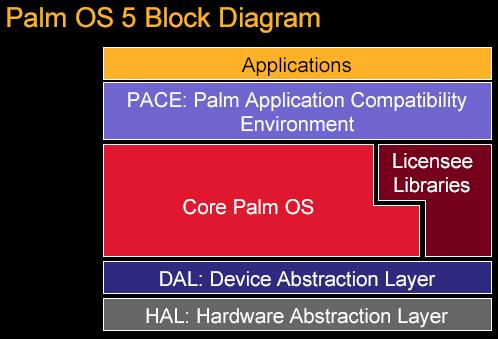| Palm apps are run in an emulated environment called the Palm Application Compatibility Environment (PACE). The structure of Palm OS 5 includes five layers: |

|
- Palm OS Applications: They includes all of the built-in Palm OS applications, such as address book, date book, and memo pad.
- Palm Application Compatibility Environment (PACE)
- Palm OS System Code:
This layer includes two functions:
- Palm OS runtime services: This function requires the desktop system library files (DLLs). These DLLs are located in the Palm OS directory, and are loaded when the code that they contain needs to be executed.
- Communication stacks: Palm OS uses the communication stacks for NetLib and Telephony components. Palm OS can optionally redirect NetLib calls to the host machine TCP/IP stack.
- Device Abstraction Layer (DAL): It is responsible for insulating Palm OS from the underlying system and hardware.
- Hardware Abstraction Layer (HAL): It allows a computer operating system to interact with a hardware device at a general or abstract level rather than at a detailed hardware level.